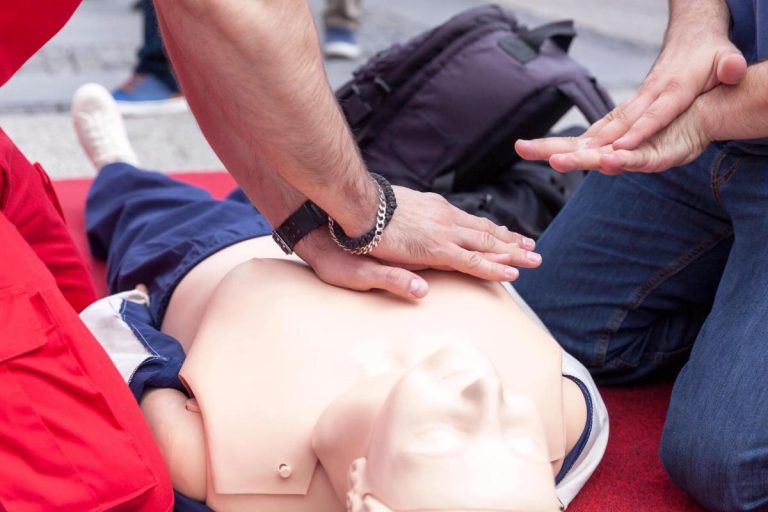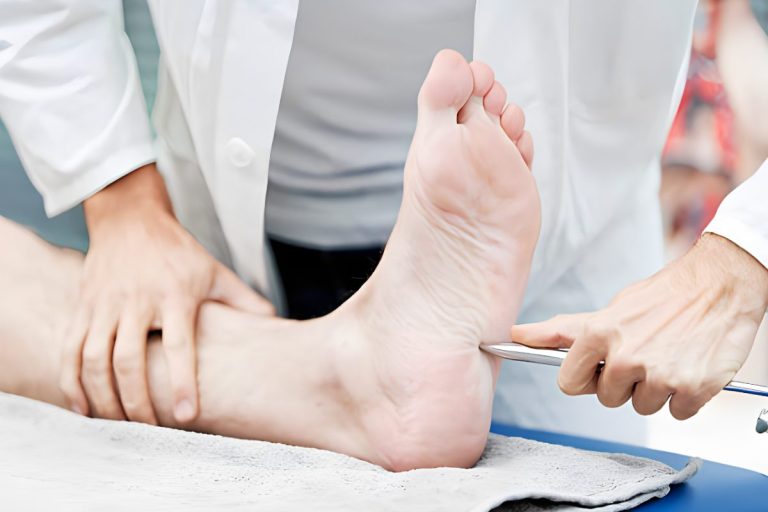Introduction
Perimenopause Muscle Loss: Sarcopenia, broadly defined, is the progressive loss of skeletal muscle mass and strength, a phenomenon that tends to accelerate during perimenopause due to hormonal changes and aging.
This muscle degradation not only affects physical appearance and strength but also has profound implications for overall health, including increased risk of falls, frailty, and a reduced quality of life.
The significance of tackling muscle loss during perimenopause cannot be overstated. Muscle mass plays a critical role in metabolic health, bone density, and functional independence.
As perimenopausal women, the gradual decrease in estrogen levels exacerbates the natural decline in muscle mass that comes with aging, making this period a crucial time for intervention.
However, this challenge also presents an opportunity – an opportunity to actively engage in preserving and enhancing our muscular health.
To combat sarcopenia, it is critical to focus on optimizing both protein intake and incorporating resistance training into your exercise routines.
A diet rich in protein is pivotal for muscle repair and growth, especially when each meal includes at least 20 grams of high-quality protein.
Complementing this with resistance and weight training exercises creates a powerful synergy, not only slowing muscle loss but potentially reversing it.
This combination is a proactive step towards maintaining muscle strength and overall health during perimenopause.
Understanding Sarcopenia in the Context of Perimenopause
Sarcopenia, a term derived from Greek roots meaning “poverty of flesh,” is more than just a natural part of aging; it’s a specific condition characterized by a progressive loss of skeletal muscle mass, strength, and function.
This phenomenon begins as early as our 30s but can become more pronounced during perimenopause.
The decline in muscle fibers, particularly the fast-twitch type that are crucial for power and strength, leads to decreased muscle mass and strength.
But why does this occur, especially during perimenopause? Hormones play a pivotal role here. Estrogen, known for its role in reproductive health, also influences muscle metabolism.
As perimenopause sets in, the ovaries gradually reduce estrogen production, disrupting the body’s ability to maintain and build muscle effectively.
This hormonal shift, combined with a natural decline in physical activity and changes in protein metabolism, sets the stage for sarcopenia’s accelerated progression during this period.
For perimenopausal women, recognizing the signs and symptoms of sarcopenia is crucial for early intervention.
These symptoms can be subtle at first and are often attributed to general aging or fatigue. They include a noticeable decrease in muscle strength, such as difficulty in lifting objects that used to be manageable, or challenges in performing physical tasks like climbing stairs or getting up from a chair.
There may also be an increase in fatigue, especially after activities that require muscle endurance.
In some cases, women might notice a reduction in muscle size or a change in body composition, with an increase in body fat despite stable weight.
Moreover, the impact of sarcopenia extends beyond physical capabilities. It can have psychological effects, such as reduced self-esteem and a perceived loss of independence, and it increases the risk of falls and fractures, which can significantly affect the quality of life.
The Power of Protein: Nutritional Strategies to Fight Sarcopenia
Protein is the cornerstone of muscle health. It’s composed of amino acids, the building blocks required for both maintaining and building muscle mass.
As we age, and particularly during perimenopause, our bodies become less efficient in processing protein, which means the need for dietary protein actually increases.
Adequate protein intake supports muscle protein synthesis, helping to counteract the muscle loss associated with sarcopenia.
For perimenopausal women, experts often recommend a protein intake of at least 20 grams per meal.
This recommendation is based on research suggesting that this amount is optimal for stimulating muscle protein synthesis.
It’s important to spread this intake throughout the day, as it helps maintain a constant supply of amino acids to the muscles, which is crucial for ongoing repair and growth.
Incorporating high-quality protein into every meal doesn’t have to be a daunting task. Here are some practical tips:
- Breakfast: Start your day with eggs, Greek yogurt, or a protein smoothie. If you prefer plant-based options, consider tofu scramble or a quinoa bowl.
- Lunch and Dinner: Include lean meats like chicken or fish, or plant-based proteins like lentils, beans, or chickpeas. Consider adding a side of quinoa or a handful of nuts for an extra protein boost.
- Snacks: Opt for protein-rich snacks like almonds, Greek yogurt, or a small portion of cheese. Plant-based options include hummus with vegetables or a handful of pumpkin seeds.
It’s also important to highlight both plant-based and animal-based protein sources, as each offers unique benefits.
Animal proteins provide all essential amino acids in the right proportions, making them ‘complete’ proteins. However, plant-based proteins can also meet your needs when a variety of sources are consumed.
For those following vegetarian or vegan diets, combining different plant proteins across meals can ensure a complete amino acid profile.
Finally, when considering dietary restrictions and preferences, it’s essential to find protein sources that align with individual health needs and ethical choices.
For instance, someone with lactose intolerance might choose lactose-free dairy products or plant-based alternatives.
Similarly, ethical considerations might lead someone to prefer plant-based proteins. The key is to find diverse and enjoyable sources of protein that fit into your lifestyle, ensuring that your diet supports your muscle health and overall well-being during perimenopause.
Resistance and Weight Training: A Physical Approach to Sarcopenia
Resistance and weight training are critical components in the fight against sarcopenia, particularly during perimenopause.
These forms of exercise are not just about building muscle size; they are crucial for enhancing muscle strength, improving functional capacity, and boosting metabolic health.
Understanding the Benefits
- Enhances Muscle Strength and Mass: Regular resistance training stimulates muscle protein synthesis, helping to build and maintain muscle mass.
- Improves Bone Density: Weight-bearing exercises increase bone density, reducing the risk of osteoporosis, which is especially important during perimenopause when bone loss can accelerate.
- Boosts Metabolism: Increased muscle mass leads to a higher basal metabolic rate, aiding in weight management and overall metabolic health.
- Enhances Functional Independence: Stronger muscles improve balance, coordination, and overall functional abilities, making daily activities easier and reducing the risk of falls.
Complementing Protein Intake
Resistance training and protein intake work synergistically. While protein provides the essential building blocks for muscle repair and growth, resistance training creates the physiological demand for these processes.
This combination is particularly potent for perimenopausal women, as it effectively counteracts the muscle loss associated with hormonal changes.
Designing a Safe and Effective Routine
- Start Slowly: Begin with lighter weights and gradually increase as strength improves. This gradual progression helps avoid injury.
- Focus on Major Muscle Groups: Include exercises that target the legs, hips, back, abdomen, chest, shoulders, and arms.
- Frequency and Duration: Aim for at least two sessions per week, with each session lasting about 30-45 minutes. Rest at least one full day between sessions to allow for muscle recovery.
- Incorporate Variety: Use a mix of free weights, weight machines, resistance bands, or bodyweight exercises like squats and push-ups.
Integrating into a Busy Lifestyle
- Create a Schedule: Dedicate specific days and times for training, making it a regular part of your routine.
- Home Workouts: Utilize home exercise equipment or bodyweight exercises for convenience.
- Combine Activities: Incorporate resistance exercises into everyday activities, like using canned goods as weights while cooking.
Precautions and Tips for Beginners
- Consult a Professional: Before starting any new exercise routine, especially if you have existing health issues, consult with a healthcare professional.
- Learn Proper Form: Consider working with a trainer initially to learn correct technique and prevent injuries.
- Listen to Your Body: Pay attention to your body’s signals. If an exercise causes pain (beyond normal muscle fatigue), stop and adjust your technique or the weight used.
- Stay Hydrated and Nourished: Ensure adequate hydration and nutrition, particularly focusing on protein intake post-workout to aid in muscle recovery.
The Importance of Combining Diet and Exercise
- Synergistic Effect: Diet and exercise work together synergistically. A protein-rich diet provides the essential building blocks for muscle, while exercise, particularly resistance training, creates the physiological need for these nutrients.
- Enhanced Overall Health: A balanced approach contributes to cardiovascular health, improved mental health, better weight management, and increased energy levels, all of which are crucial during perimenopause.
Addressing Other Lifestyle Factors
- Sleep: Quality sleep is crucial for muscle repair and overall health. Lack of sleep can hinder muscle recovery and growth, disrupt hormonal balance, and affect appetite regulation.
- Stress Management: Chronic stress can lead to elevated cortisol levels, which may contribute to muscle breakdown. Techniques such as mindfulness, yoga, and deep breathing can help manage stress levels.
- Hydration: Adequate hydration is essential for optimal muscle function and overall health. Water plays a critical role in nutrient transport and body temperature regulation.
- Avoiding Harmful Habits: Smoking and excessive alcohol consumption can negatively impact muscle health and overall wellness.
Tailoring the Approach to Individual Needs and Capabilities
- Personalized Nutrition Plan: Dietary needs can vary based on individual health conditions, lifestyle, and personal preferences. It’s important to create a nutrition plan that reflects these individual needs, ensuring it’s rich in protein and other essential nutrients.
- Customized Exercise Routine: Exercise routines should be tailored to individual fitness levels, physical limitations, and personal goals. This might include varying the types of resistance training or adjusting the intensity and duration of workouts.
- Regular Health Check-ups: Regular consultations with healthcare professionals can help monitor health status, adjust dietary or exercise plans as needed, and address any emerging health issues.
- Listening to the Body: Recognizing and respecting the body’s signals is key. Adapting exercise and dietary habits in response to changes in energy levels, mood, and physical capabilities is essential for maintaining a balanced approach.
In conclusion, a holistic approach to managing sarcopenia in perimenopause involves a balanced diet rich in protein, regular exercise, particularly resistance training, and attention to other lifestyle factors like sleep, stress management, and hydration.
Tailoring this approach to individual needs and capabilities ensures that it’s not only effective but also sustainable and enjoyable, leading to a healthier, more vibrant life during perimenopause and beyond.








